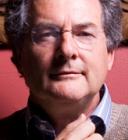Healing Both Victims and Perpetrators
A young man with racial hatred in his heart and carrying a concealed weapon, which he acquired without a background check into his criminal record, enters a church famed for its role in the civil rights movement in Charleston, South Carolina. He knows it is the hour for a prayer circle attended by some prominent African-American leaders. He intends to kill them and by so doing instigate riots and a race war. Before he kills nine people, all African-American, he hesitates and almost reconsiders, based on the fact that the people present were so kind and welcoming to him. But the blinding wound of racism boils up inside him and he carries out his intended murderous rampage.
In the days after the slaughter of the innocents not only did this depraved violence fail to ignite a race war it exposed the persistent and virulent legacy of racism and its practice and symbols. It revealed the profound depth and unshakable dignity of a whole community and rather than triggering reactivity it called forth higher ground and, in some cases, remarkable statements of compassion and forgiveness by families of the victims.
The African-American community in Charleston has set a new high benchmark in responding to racist attack. To achieve this level of attainment requires a deep understanding of wounding and its transformation.
To begin any historical or collective healing process there must—obviously—be a cessation of oppression and abuse and a clear dismantling of the structures of power and privilege that propagate exclusion, inequality and distorted stereotypes. But one cannot legislate an end to wounds which feed off unresolved hurt and trauma or feelings of lack of safety, betrayal or loss of status. If this psychological aspect of healing is not addressed, more formal legal progress and reform is always in danger of being overtly or covertly sabotaged.
The psychology of social healing understands that the wounds of both victims and perpetrators need to be addressed. Objective truth is needed to unmask the precise functioning of systemic oppression, as well as its chains of command, its proxies and surrogates and to disseminate the reliable historical accounting of its abuses. Subjective truth, on the other hand, is needed to open windows into the pain and trauma experienced by victims and to pave the way for reconciliation and even forgiveness. But this kind of emotional and psychological truth is also needed for perpetrators to understand the lies and false ideals that were transmitted to them and the very personal way they were inducted into ignorant prejudice. For the perpetrators must enter into a spirit of genuine atonement if they are to transmute the poison they ingested and come to a clear realization of their part in the propagation of grievous harm.
The wound goes into hiding—wears camouflage—if not addressed. It takes the form of avoidance and denial. It pretends everything is fine when it isn’t. It gets pushed down into the personal subconscious and the collective unconscious. It congregates with other wounds and waits for the toxic biochemistry of rage to bring it out of hiding—seeking vengeful expression.
It is often the victims—as exemplified by the African-American community in Charleston—who do the necessary emotional, psychological, and spiritual work necessary to heal things from the inside out. More often than not perpetrators and those who actively or passively colluded with them take a simplistic short-cut defined by a let’s move-on approach. But social evolution shows us that even very old wounds can be ignited under certain conditions and rip apart social facades.
The Charleston mass murderer, for example, believed he was serving the Confederate Flag with all of its associations of racial superiority. That officially sanctioned symbol flew, after all, at the state capitol. You could say that flag was a time-bomb waiting for any wounded soul given a gun to go out and honor its great lie—that white people are racially superior.
What a moment of evolutionary grace to see that flag coming down. But this should be more than a symbolic moment, it should be an opportunity for atonement and forgiveness. It is the perpetrators and their progeny who must sincerely beg forgiveness from the victims and their progeny.
Evolving together takes more than legislation or even good intentions, it requires balancing our need for strength with sharing our vulnerability. Justice can only thrive when there is compassion and understanding.
Yes indeed, as we evolve we recognize that it is the heart which holds the great key to our collective healing, to real civility, true progress and the courage needed to face our own shadow.


